Why Does My Beard Hurt? Causes & Tips for Soothing the Pain
Author: Faiysal Kothiwala
Updated at: Dec 09, 2024
Beard pain is a common complaint among men with facial hair. This pain can range from mild discomfort to a sharp, stabbing sensation, and can be caused by a variety of factors. Understanding the causes of beard pain is important in finding the appropriate treatment and relief. Common causes of beard pain include ingrown hair, dry skin, trimming or shaving, and skin conditions.
In order to alleviate beard pain, it is important to follow proper beard care routines, including keeping the beard clean, moisturizing the skin and hair, trimming carefully, and seeking medical attention if the pain is severe or persistent. In this article, we will make an endeavor to identify various causes related to beard pain and recommend pragmatic treatments along with necessary information which will enable you to make informed decisions on your beard growth journey. So stay tuned!
1. Accumulation of Oil and Debris in Your Beard

As a result of the continuous shedding of skin cells underneath your beard, a lot of debris gets accumulated in your beard, contributing to beard pain. This problem will usually get exacerbated if the same debris is not regularly washed and your beard is not cleaned regularly. The combination of dead skin cells and oil creates the ideal environment for yeast and bacteria to flourish, which can cause inflammation and can further exaggerate your problem. Hence, beard hygiene and care are of paramount importance to alleviate these problems.
Treatment
Use a proper beard wash or beard shampoo instead of using regular hair shampoos, body washes, or soaps as they can be detrimental to your beard. Beard shampoo is specifically formulated to cater to the unique needs of facial hair, which differs from the hair on your scalp. Regular shampoos may contain harsh chemicals that can strip the natural oils from your beard, leaving it dry, brittle, and prone to breakage. Using regular shampoo on your beard can also lead to skin irritation and dryness.
Additionally, beard shampoos often contain nourishing ingredients, such as vitamins, essential oils, and plant extracts, that can help promote healthy hair growth and prevent beard itch, dandruff, and other common beard problems. After using beard shampoo, it’s important to follow up with a beard conditioner to keep your beard soft and moisturized.
2. Having a Dry and Brittle Beard

A dry and brittle beard can contribute to beard pain in several ways, including pain and tenderness along the jawline. When your beard is dry and brittle, the hair strands become stiff and can easily break or split, leading to sharp, painful sensations. The broken hair strands can also poke and irritate the skin, causing further discomfort.
In addition, a dry beard can lead to dry, itchy, and irritated skin, which can also contribute to beard pain. Dry skin can cause flakiness, redness, and inflammation, leading to a burning or stinging sensation.
Furthermore, a dry and brittle beard is more susceptible to developing ingrown hair, which occurs when the hair curls back and grows into the skin, causing inflammation and pain.
Treatment
To avoid beard pain caused by dry and brittle hair, it is important to keep your beard moisturized and nourished using good quality beard oil. Always use high-quality beard oil that doesn’t contain any artificial fragrances or fillers.
Remember using good quality beard oil will not help in the functional moisturization of your beard but will also promote beard growth. Adding a beard balm to your beard care routine can also supplement the hydration and moisturization of your hair and skin, preventing breakage and irritation.
After showering, apply a gentle beard shampoo and conditioner to keep your beard clean and healthy.
3. Suffering From Beard Acne
-----------------------------
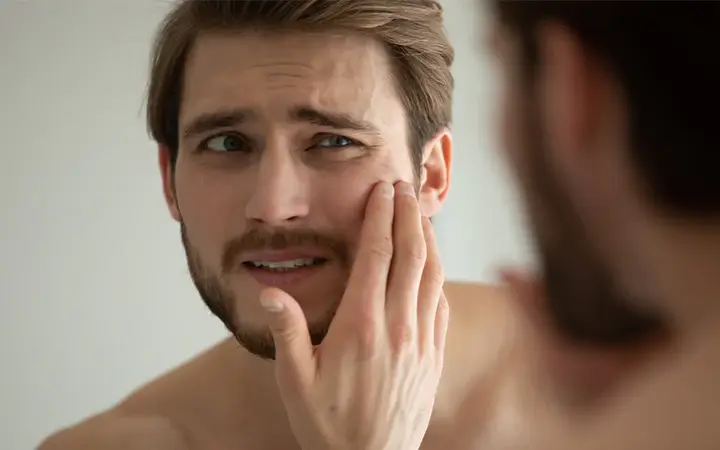 Beard acne, also known as acne barbae, is a common condition that occurs when hair follicles become clogged with oil and dead skin cells, leading to inflammation and pimples. If your beard hurts only when you touch it, then there's a chance that a painful pimple is lurking underneath your facial hair. There is no need to worry as acne is treatable with the right guidance and good beard care awareness.
Beard acne, also known as acne barbae, is a common condition that occurs when hair follicles become clogged with oil and dead skin cells, leading to inflammation and pimples. If your beard hurts only when you touch it, then there's a chance that a painful pimple is lurking underneath your facial hair. There is no need to worry as acne is treatable with the right guidance and good beard care awareness.
Treatment
Regularly washing your beard with a mild cleanser can prevent acne by removing excess oil and dead skin cells. It is also important to include a gentle exfoliating practice in your beard care routine using a scrub or brush which can help in removing dead skin cells and unclogging hair follicles.
After beard hygiene, the next step is effective moisturization with a good beard care product. Using beard oil or balm can help keep your skin and hair hydrated, reducing the risk of dry skin and acne.
There are several over-the-counter acne treatments that can help treat beard acne, such as benzoyl peroxide, salicylic acid, and alpha hydroxy acids. These treatments can help to unclog pores and reduce inflammation.
If your beard acne is severe or persists despite home treatments, then we recommend that you see a dermatologist for stronger prescription treatments, such as topical or oral antibiotics.
4. Ingrown Hair
----------------
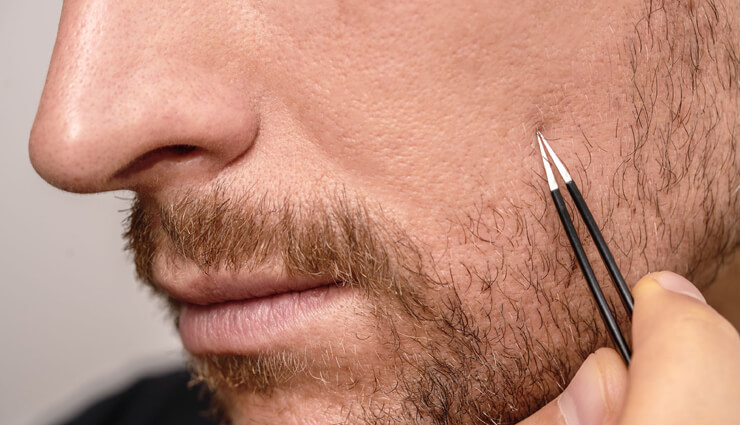 An ingrown beard hair, although not very serious, ironically, can be very painful and discomforting. An ingrown beard, also known as ingrown hair or pseudofolliculitis barbae, is a condition that occurs when hair curls back or grows sideways into the skin, causing irritation, inflammation, and sometimes infection.
An ingrown beard hair, although not very serious, ironically, can be very painful and discomforting. An ingrown beard, also known as ingrown hair or pseudofolliculitis barbae, is a condition that occurs when hair curls back or grows sideways into the skin, causing irritation, inflammation, and sometimes infection.
Ingrown hairs are a common problem for men with curly or coarse hair, as these types of hair are more likely to bend and grow back into the skin. Most commonly, they appear along the jawline or the skin of your neck, but they could happen anywhere.
Treatment
Gentle exfoliating of the skin can help to remove dead skin cells and unclog hair follicles, thereby reducing the risk of ingrown hair. Application of a warm, damp compress to the affected area can also help to soothe inflammation and encourage the hair to grow out.
Avoid shaving the affected area until the ingrown hair has healed, implying that it has either grown out or disappeared. If your ingrown hair stubbornly maintains the status quo of staying inside your skin, then you can try using sterile tweezers to gently remove it. Make sure to sterilize the tweezers with rubbing alcohol before and after use to prevent infection.
There are several over-the-counter creams and ointments that can help to reduce inflammation and prevent infection, such as hydrocortisone cream and antibiotic ointments.
We also recommend that you start brushing your beard with a boar bristle beard brush, as they are very effective in removing entanglements from thick and curly facial hair.
5. Washing Your Beard With Hot Water
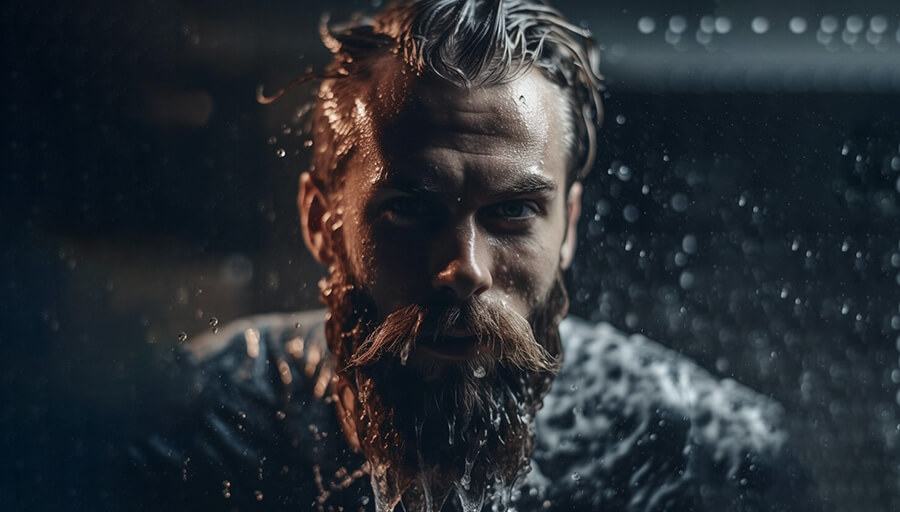
While hot showers can feel relaxing and soothing, they can actually be bad for your facial skin in several ways. It can strip the skin of its natural oils, leaving it dry, tight, and flaky. This can make existing skin conditions, such as eczema or psoriasis, worse.
Hot water can also contribute to inflammation and redness in the skin, especially if your skin is sensitive to pimples, and can cause a burning sensation and itchiness. It can also damage the skin's natural barrier, which can lead to moisture loss and increased vulnerability to environmental damage.
Treatment
To avoid negative effects associated with hot water, it is recommended to take shorter, cooler showers. It's also important to moisturize your beard with beard oil after showering to help restore its natural barrier and prevent dryness.
In addition, if you enjoy hot showers, consider incorporating them into your routine as a treat rather than a daily occurrence.
6. Drying Your Beard Using A High-Heat Hair Dryer
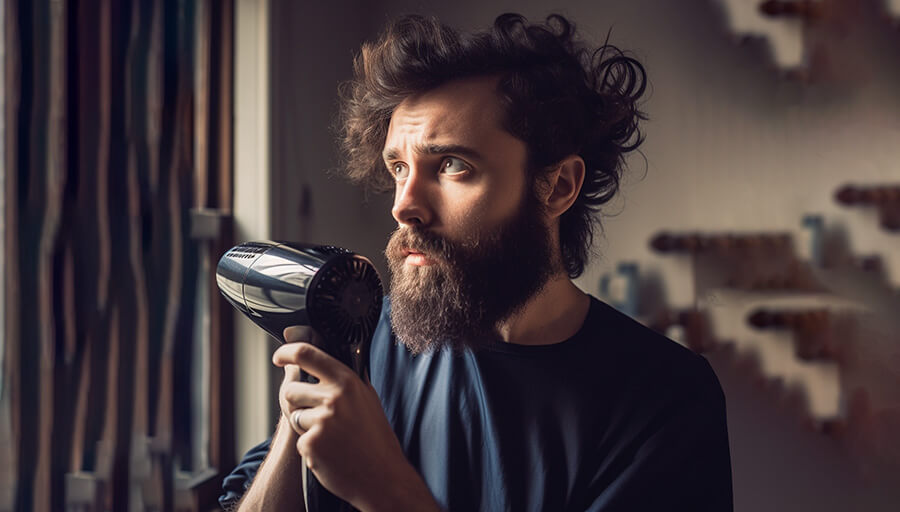
Currently, one of the most popular trends in the beard industry is the use of beard straighteners. While these tools can be effective in straightening curly facial hair, they also come with drawbacks. The high temperatures used by beard straighteners can cause the natural oils in the beard to dry out, leading to dryness and brittleness, and potentially damaging individual beard strands. Overuse of beard straighteners can result in extreme dryness and brittleness, which can be very detrimental to overall beard health.
Treatment
Application of a heat-protectant product to the beard before using a straightener can help reduce damage caused by high temperatures. Moreover, while using, set the temperature of the beard straightener to the lowest possible setting to reduce the risk of damage to the beard hair.
Try to limit the use of beard straighteners to once or twice a week to minimize the amount of heat exposure and regularly moisturize the beard with a good quality beard oil or balm to help combat dryness and brittleness. Trim the beard regularly to prevent split ends and breakage.
7. Usage of Low-Quality Beard Products
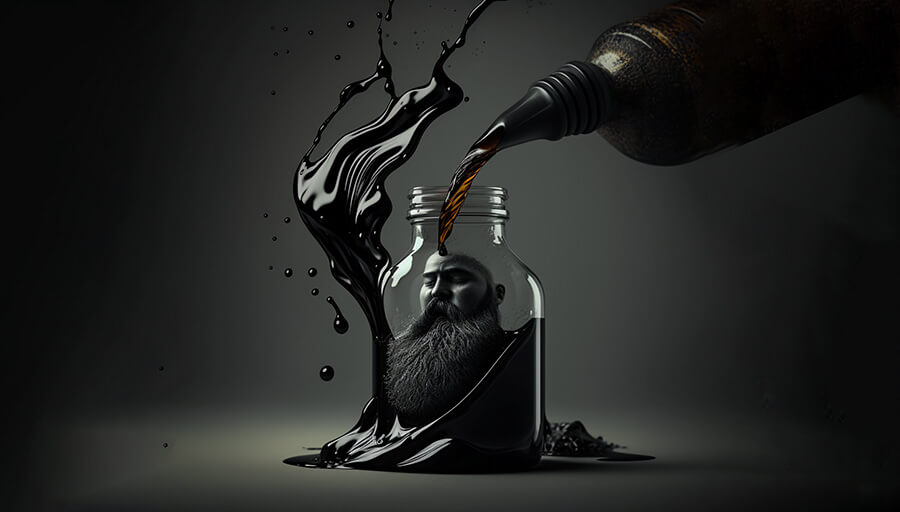
The use of poor-quality beard products can contribute to a variety of beard-related problems, including beard pain. Such beard products may contain harsh chemicals or fragrances that can irritate the skin, causing redness, itching, and discomfort. Low-quality beard products may not provide adequate hydration or moisture or maintain the skin's natural barrier. Their usage can also lead to dry, itchy skin with weakened beard hair, leading to breakage and split ends.
Recommendation
To solve these problems, it's imperative to use high-quality beard products that are specifically formulated for facial hair. Look for products that contain natural ingredients and are free from harsh chemicals and fragrances. Finding the right beard care products can be a daunting task, but there are a few key factors you can consider to make the process easier.
Here are some tips for selecting and using high-quality beard products:
- Check the labels of the products you use to ensure they contain natural, high-quality ingredients.
- Different beard types require different products. For example, coarse and curly beards may need more moisturizing products than straight beards.
- It's important to consider your skin type as well, as some products may cause irritation or dryness. If you have sensitive skin, look for products with natural ingredients and avoid those with harsh chemicals.
- The longer your beard, the more maintenance it requires. You may need to use products such as beard oils or balms to keep it moisturized and healthy.
- Choose products that contain natural ingredients such as jojoba oil, argan oil, or shea butter. These ingredients can help nourish your beard and keep it looking healthy.
- Look for product reviews online to see what other people with similar beard types and skin types are using and what they recommend.
- Once you have found some products you are interested in, test small amounts to see how your skin and beard react before committing to a full regimen.
8. You Could Be Suffering From Beardruff
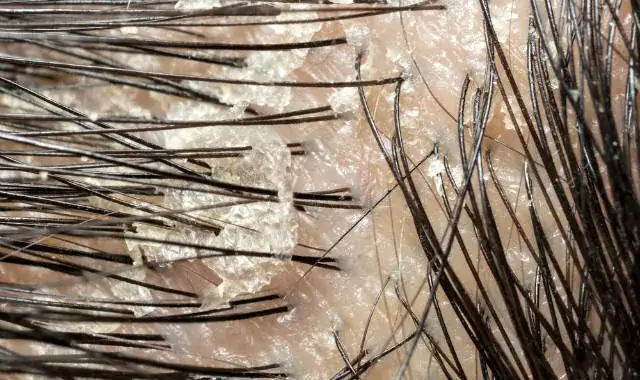
Beardruff is a common problem that affects many men with beards. It refers to the flaking and dry skin that can occur on the skin beneath the beard. If left untreated, beardruff can contribute to beard pain by causing skin irritation and inflammation.
Treatment
Regular washing of the beard can help to remove dead skin cells and reduce the amount of oil and dirt that has accumulated on the skin. As we have already highlighted, use a beard-specific shampoo that contains natural ingredients and is gentle on the skin. Avoid using regular shampoos or soaps, as they can deprive your beard of its essential natural oils and contribute to dryness.
Use a gentle exfoliating product or tool to remove dead skin cells and prevent the buildup of oil and dirt on the skin. After exercising hygiene and effective exfoliation, invest in good quality beard oil or balm to moisturize the skin and prevent dryness. This can help to reduce itching and inflammation and prevent beard pain.
Protect Your Beard With Honor, and Tend to It With Utmost Care
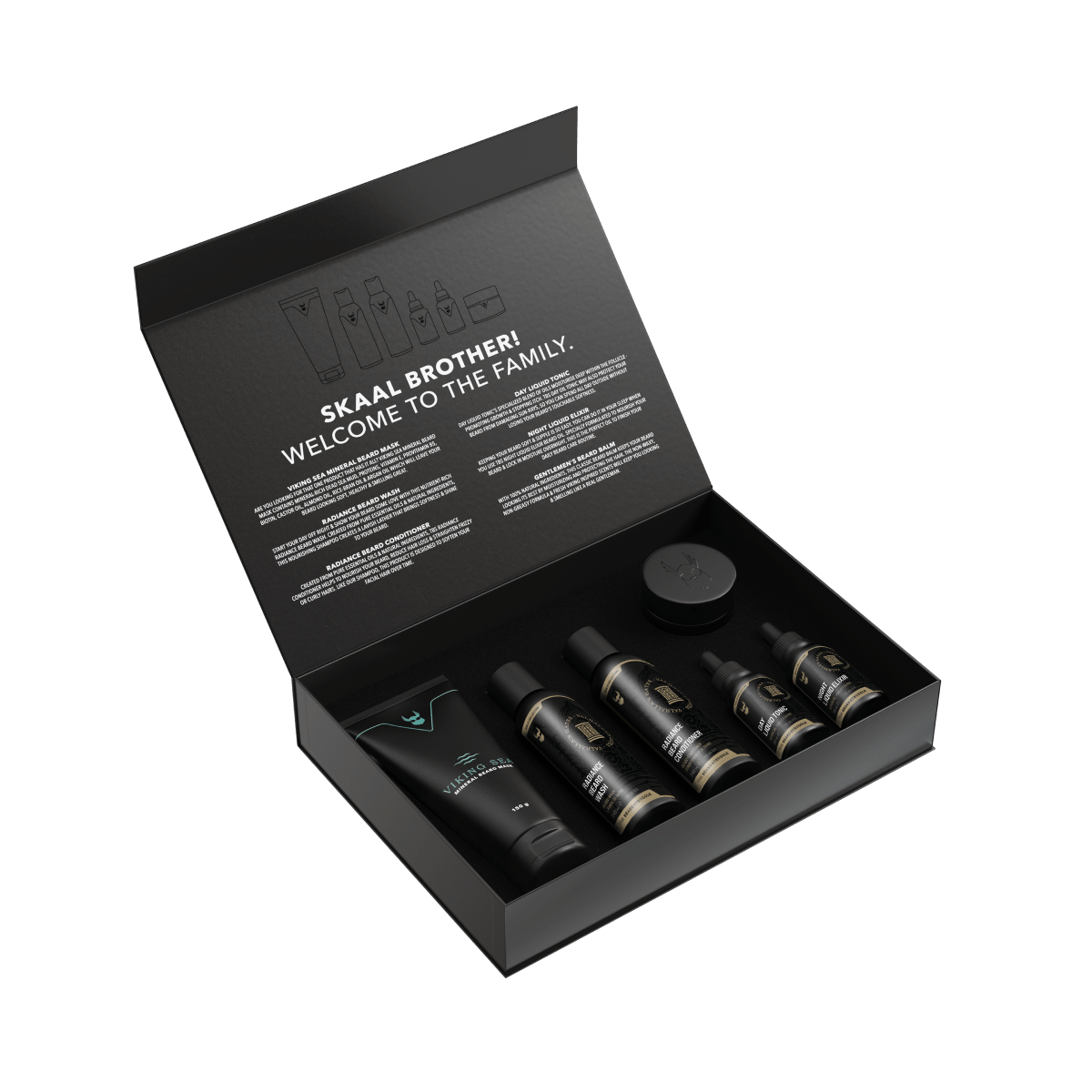
There can be several reasons contributing to why your beard may hurt, including dryness, brittleness, ingrown hair, and acne. However, with proper beard grooming, many of these problems can be solved.
For optimum beard growth, invest in using high-quality beard products, such as beard oil and shampoo, and follow a regular beard grooming routine that includes washing, exfoliating, moisturizing, and brushing.
By taking care of your beard and skin, you can prevent common beard problems like beardruff and skin irritation, and reduce the risk of beard pain. So, it's essential to implement a proper beard grooming regime to keep your beard healthy, soft, and pain-free.

